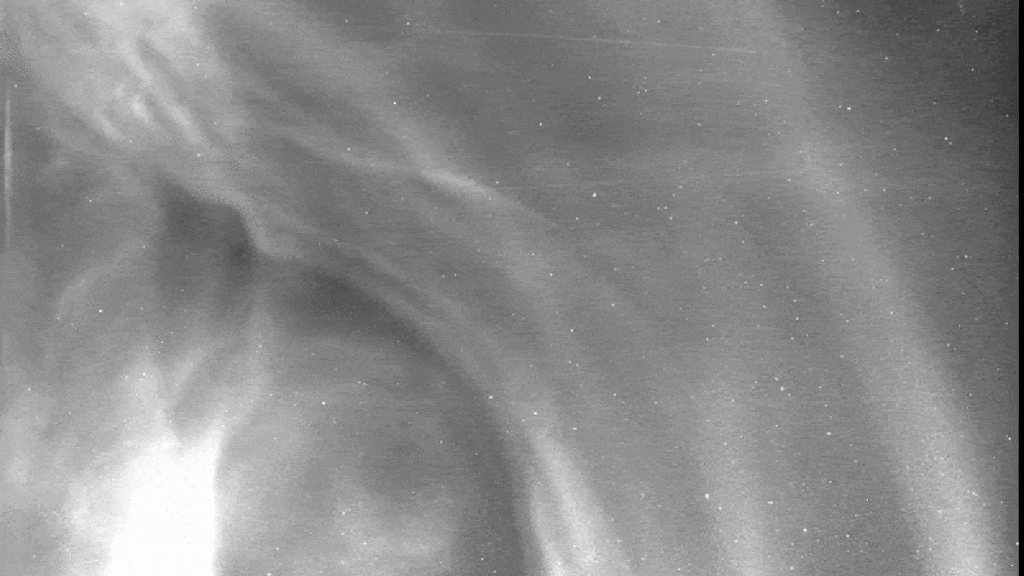POV: You're A NASA Probe Skimming The Surface Of The Sun

The Parker Space Probe is described by NASA as being “about the size of a small car,” and its only goal is to fly as close to the sun as possible to try to unravel some solar mysteries. What exactly is going on in the ‘solar corona,’ and what do solar flares really do? The space car, launched back in 2018, is currently sitting about 5.8 million miles from the sun and just over a year ago it flew right through a massively powerful sun explosion. Here is what that looked like.
Ride Along On The Trans Mass Trail
The explosion is called a coronal mass ejection, and this is the first time in history that any spacecraft has ever flown straight through one. A stream of particles erupted from their orbit around the sun, interplanetary space dust blown away from the sun by the CME event. You can see in the gif from NASA that at the start the view of the satellite’s sensor is obscured by lots of dust and debris, and the surrounding stars get clearer as the dust is vacuumed away from view. Without the interplanetary dust in view, there’s nothing to reflect the light of the sun.
“These interactions between CMEs and dust were theorized two decades ago, but had not been observed until Parker Solar Probe viewed a CME act like a vacuum cleaner, clearing the dust out of its path,” said Guillermo Stenborg, an astrophysicist at the Johns Hopkins Applied Physics Laboratory.
Parker uses the gravity of Venus to sling itself closer to the sun with each revolution. By the end of its useful life, it will travel about a million miles closer to the sun than this particular flyby. This is a significant scientific advantage, because the sun is getting closer to its solar maximum, a cycle that renews every 11 earth years. That’s the point at which the sun’s activity increases, allowing researchers to investigate these rare phenomena.
How much longer until we’re out there flying among the space dust, investigating interplanetary interaction with our own two eyes? Maybe not that close to the sun, but uh, could be cool.



